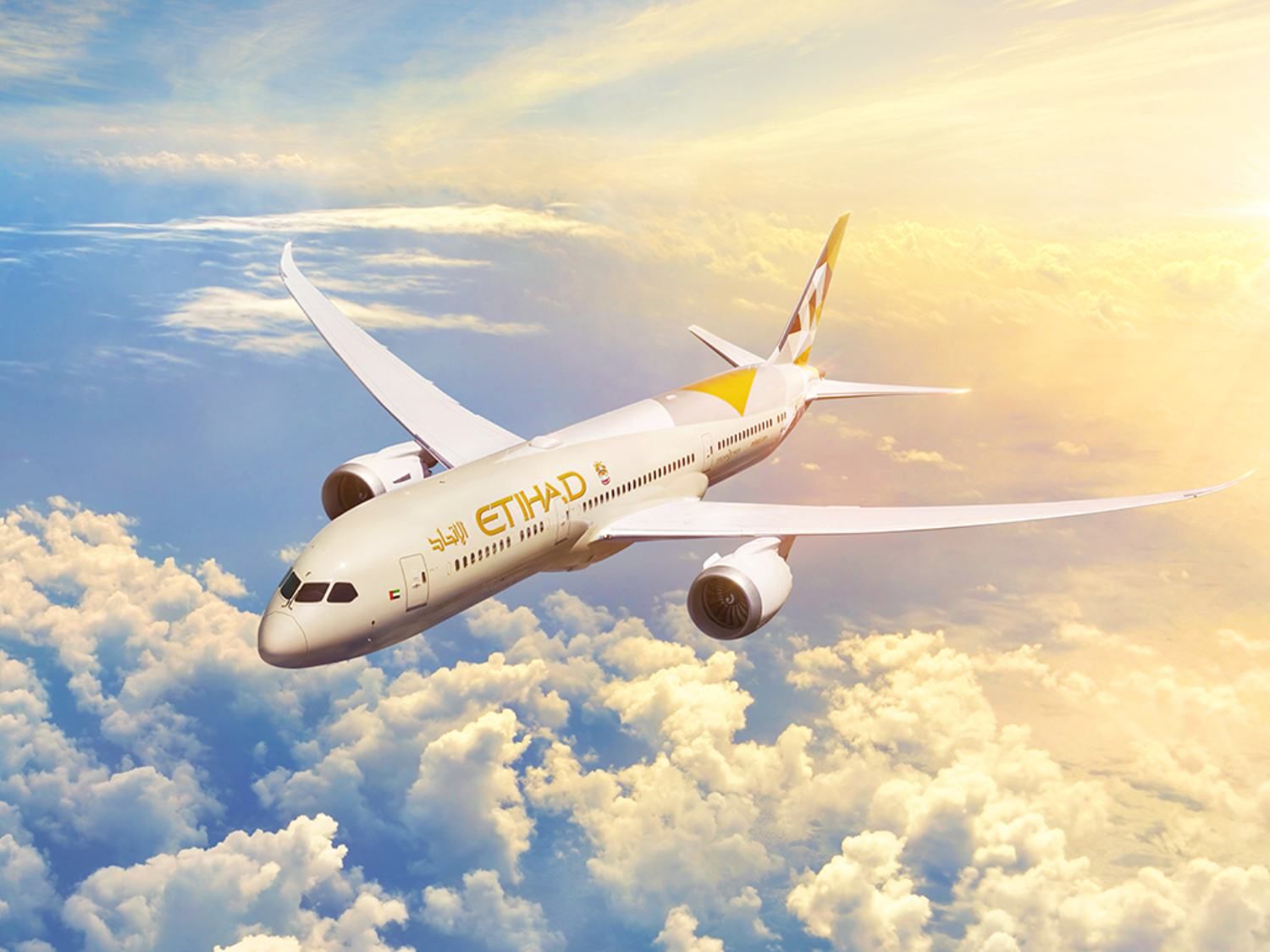Etihad Airways operates 42 «green» flights in five days, including 22 test flights to reduce condensation trails
In celebration of International Earth Day, Etihad Airways conducted 42 «green» flights (EcoFlights) over five days. Among the operations carried out, 22 were test flights as part of a research into the reduction of condensation trails produced by combustion engines at high altitudes.
According to the company, the initiative was «the world’s most intensive sustainable flight testing program». Over a five-day period, studies on operational efficiencies, new technologies and procedures for reducing greenhouse gas emissions were conducted.
Tests for the elimination of condensation trails were carried out on scheduled commercial flights. Etihad tested experimental prevention technologies that were developed in collaboration with SATAVIA, a U.K.-based aerospace company.
«We believe this is the most intensive sustainability flight testing program ever conducted, the results of which will contribute to reducing aviation’s carbon emissions and environmental impact as the learnings are implemented into standard airline operations across the industry», commented Tony Douglas, Etihad Group CEO.
The executive maintained that some of the technologies evaluated can begin to be implemented today. «We are well in the process of putting these innovations into standard operational procedures, which we hope to see replicated across the industry», he said. He also recalled the need to continue working to increase the availability of alternative solutions and emphasized the regulation required to implement them.
On the other hand, Douglas highlighted another aspect of the operations that, in his opinion, would offer a feasible alternative in the short term. This is the optimization of routing, the implementation of optimized climbing and continuous descent profiles, which require the restructuring of many current procedures.
According to Etihad, on many of the «green» routes, a reduction in flight time of around 40 minutes was achieved through the implementation of these initiatives. The time savings also translated into fuel and carbon dioxide emissions savings.
Technologies and processes implemented
- In coordination with air navigation service providers (ANSP), flight paths, and climbing and descent profiles were optimized to save time and reduce fuel consumption.
- In route planning, Etihad avoided areas that favored the formation of condensation trails due to atmospheric conditions.
- The airline partnered with Boeing to develop a specific software that suggests the optimum cruise speed for each stage of the flight, depending on the atmospheric conditions and the weight of the aircraft at any given time. According to the company, the technology reduced fuel consumption by 1.5% per flight.
- On sufficiently long runways, the aircraft used a reduced flap position setting compared to the usual ones during landing. This reduced drag and the power required for the final approach. The procedure avoided the consumption of approximately 30 kilograms of fuel on each landing.
Most of the ground taxiing after landing was performed with the power of only one of the engines. This reduced the carbon emissions associated with transit to the parking position by 20% to 40%.
The final results and data from the Earth Day EcoFlight and Contrail flight test program will be analyzed in the coming weeks. They will be added to the knowledge base built by Etihad to work on decarbonizing operations.
See also: Etihad Airways conducts test flights to eliminate contrails


Para comentar, debés estar registradoPor favor, iniciá sesión